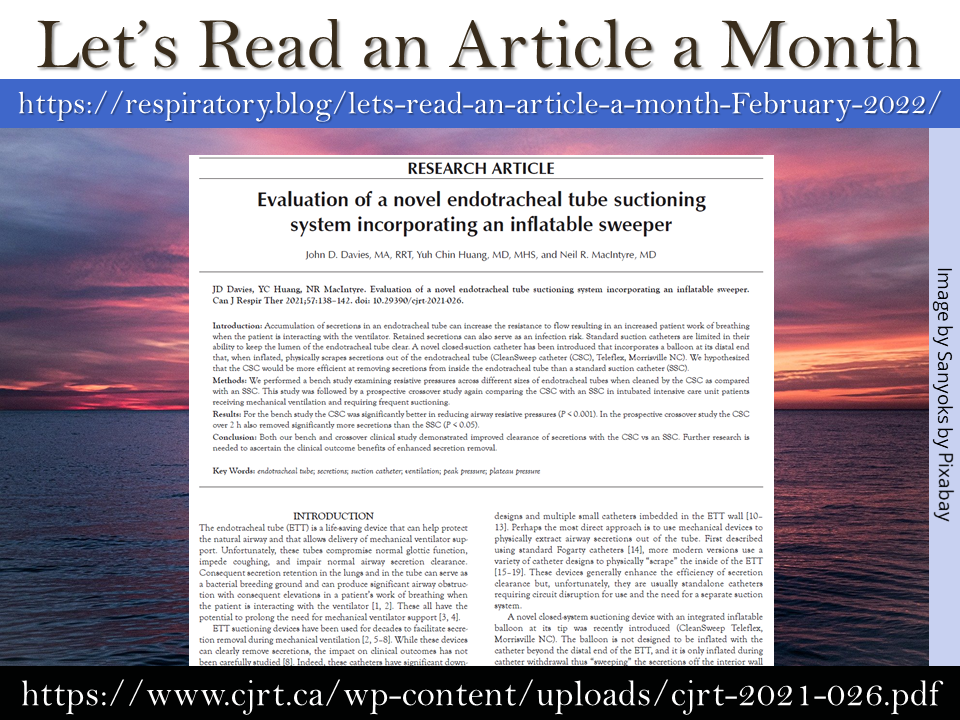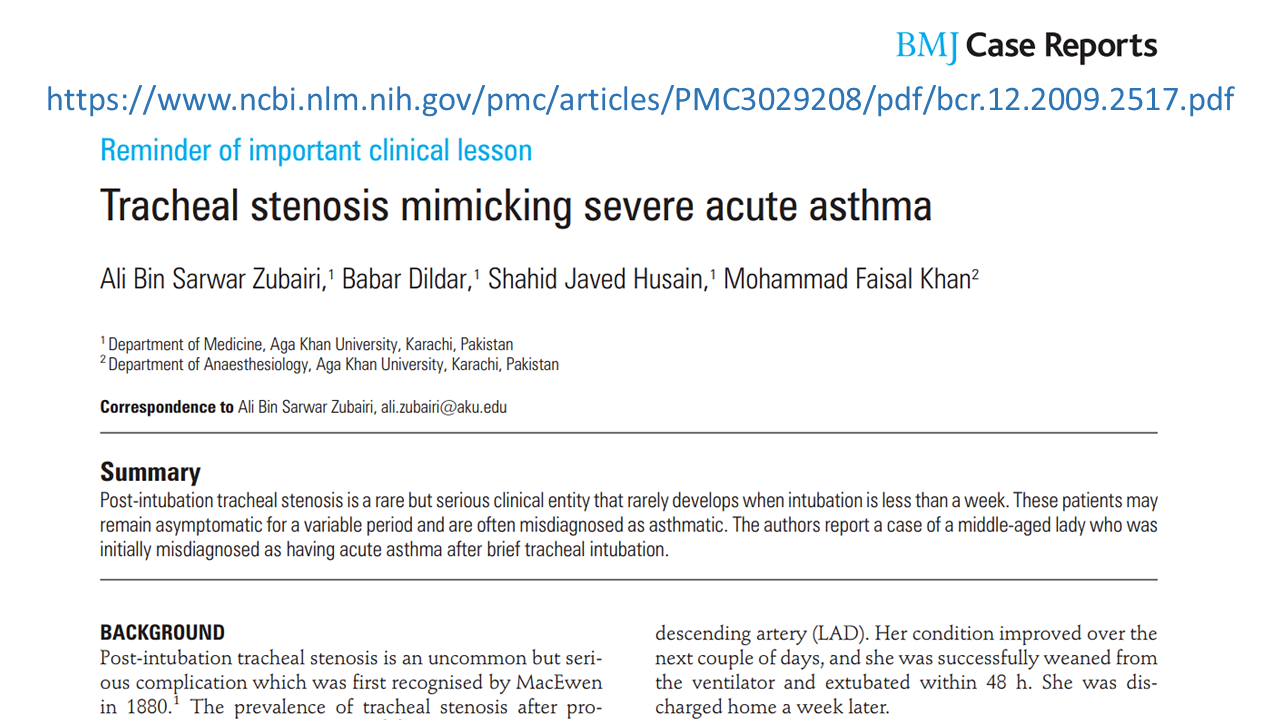
Every month I read an open-access article. I share the title and associated link with my followers to encourage clinicians to read more articles, stay up to date, and continue to grow.
This month I found an interesting piece to share with you. This one falls under the innovation category and is about a product called CleanSweep. The objective of this paper is to introduce CleanSweep and assess “whether the CleanSweep suction catheter is more efficient for secretion removal than the standard suction catheter” (p.138). To give a quick description, CleanSweep is a “closed-system suctioning device with an integrated inflatable balloon at its tip. … The balloon is not designed to be inflated with the catheter beyond the distal end of the ETT, and it is only inflated during catheter withdrawal thus “sweeping” the secretions off the interior wall of the ETT” (p.138)
Before you continue, I would like to add a quick disclaimer that this is not an endorsement or a sponsored blog post. Please continue to use products that have been approved by your employer.
Evaluation of a novel endotracheal tube suctioning system incorporating an inflatable sweeper
By John D. Davies, MA, RRT, Yuh Chin Huang, MD, MHS, and Neil R. MacIntyre, MD.
Can J Respir Ther 2021;57:138–142. doi: 10.29390/cjrt-2021-02
Link to the article: https://www.cjrt.ca/wp-content/uploads/cjrt-2021-026.pdf
Reasons I found this article interesting
- The device has a physical “sweeping” method for removing secretions in the ETT versus just a suction method.
- It is a closed suction system and the valve provides three options of ‘locked, suction only mode and suction and balloon mode (p139).
- It was published on CJRT, a publication I trust.
- The authors were clear and transparent about their conflict of interests, on page 141, and also clear about the limitations of their study:
- “Neither our study nor other studies on mechanical ETT cleaners have been designed to be long enough nor large enough to demonstrate improved clinical outcomes linked to improved secretion removal. To do this will require large expensive randomized controlled trials following many patients over long periods assessing such outcomes as hospital length of stay and even mortality. “ (p141)
Happy reading and learning,
Farzad Refahi
Feb. 6, 2022
https://respiratory.blog/lets-read-an-article-a-month-february-2022/
